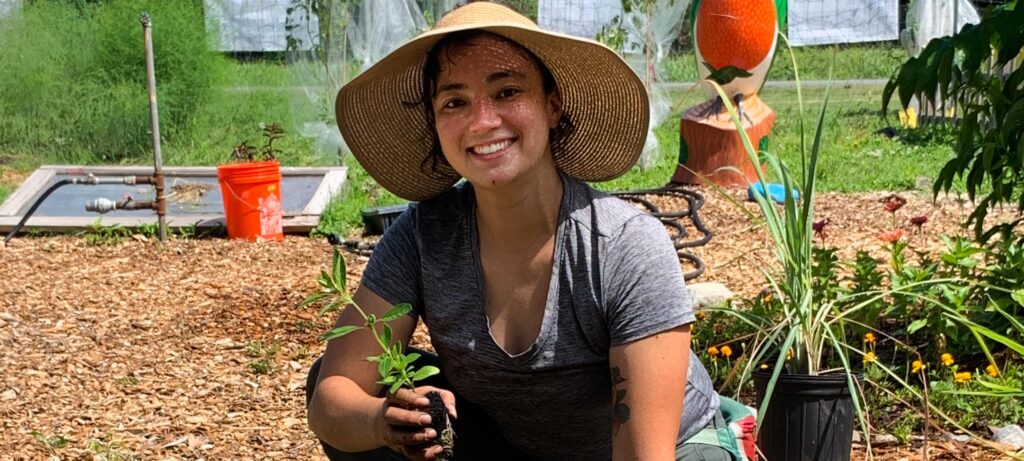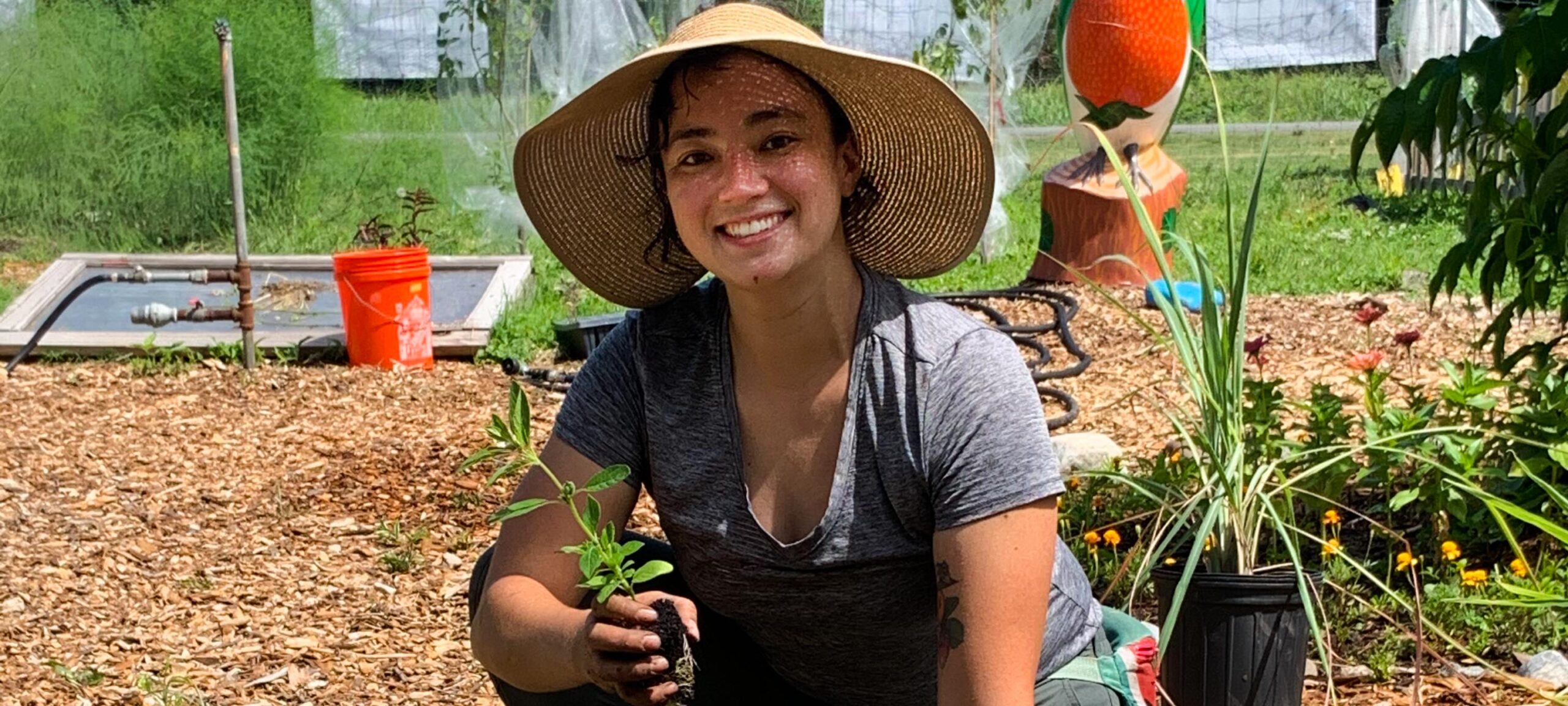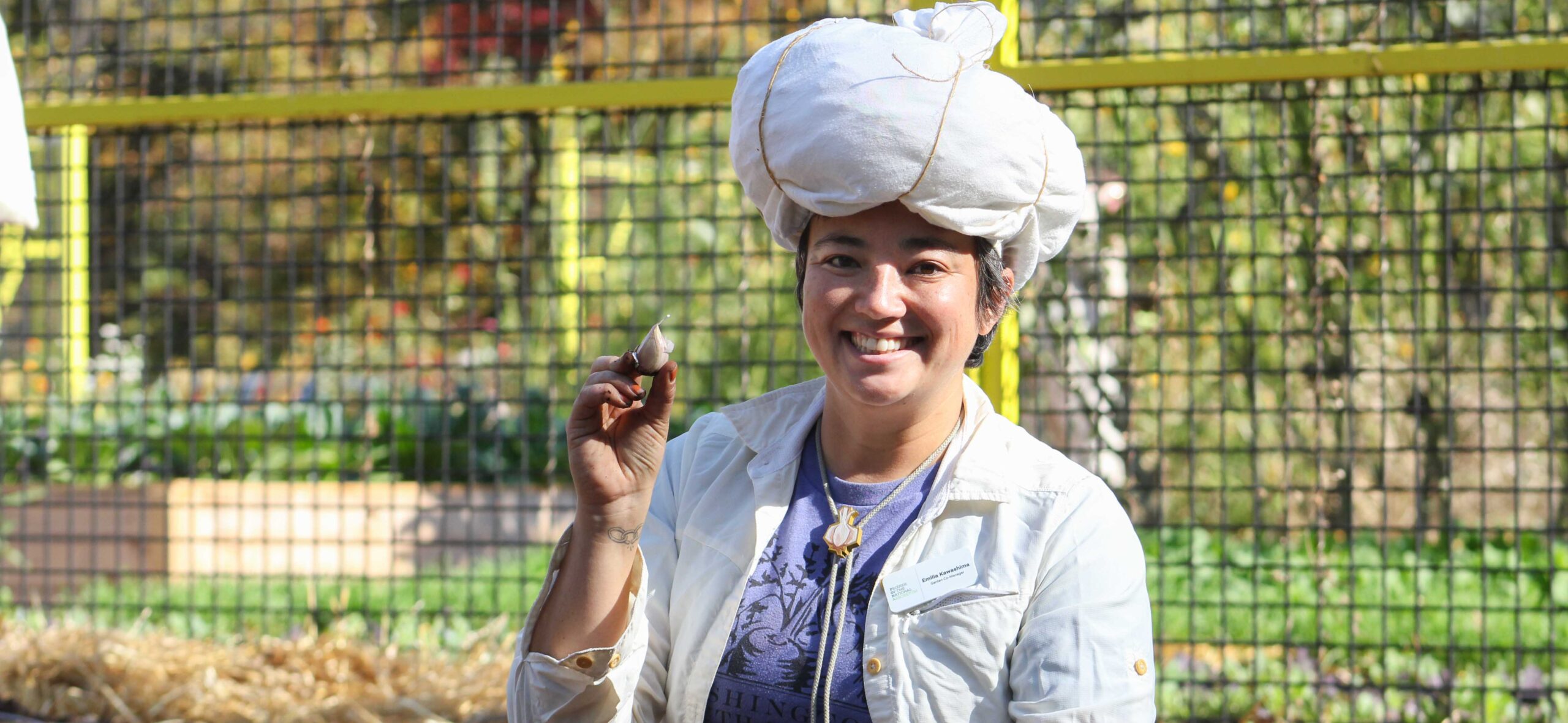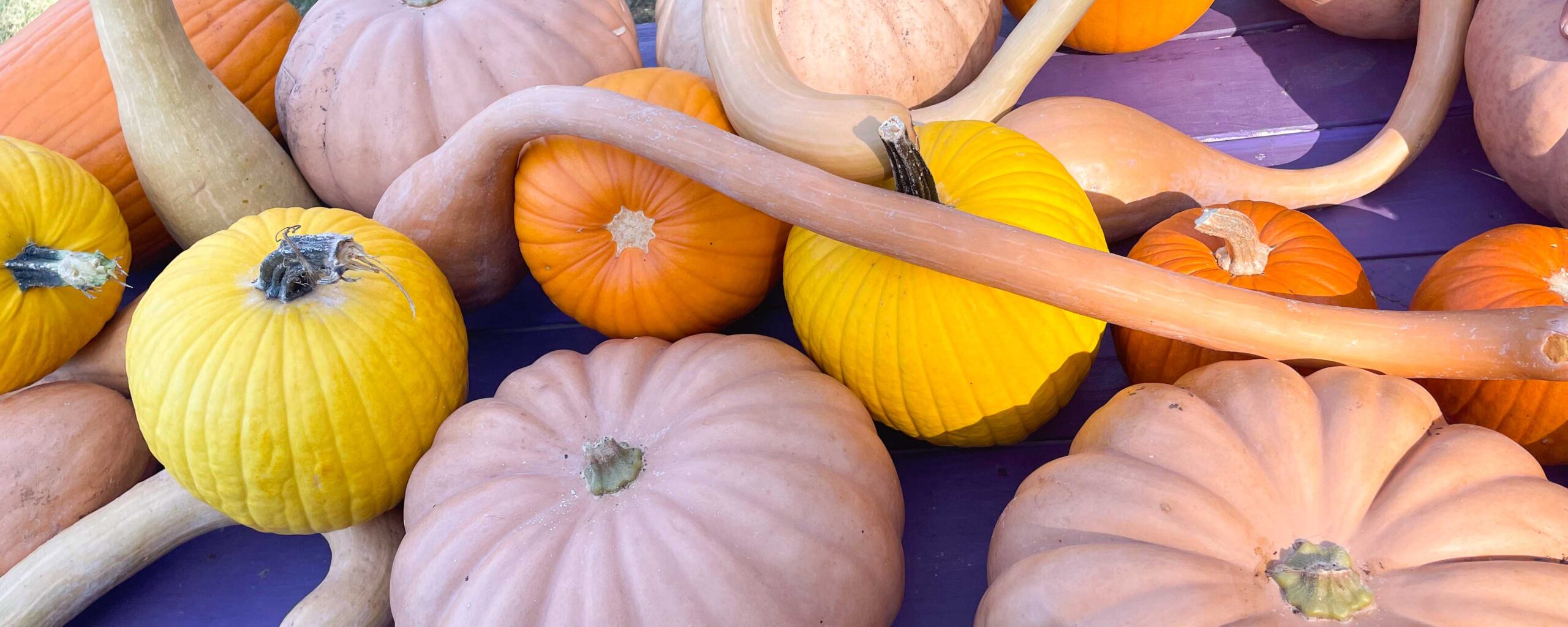Emilia’s Garden Tips: What to Plant Now for Fall/Winter
Summer comes to an end and the new school year is starting. Here are some suggestions on what to plant this season and whether to direct sow or transplant.*
Cooking Greens
- Such as collards, kale, swiss chard, bok choy, mustard greens
- Transplanting these will be your best bet! They don’t like the heat so growing from seed will take a lot longer and also germination might not be great. Be sure to cover these baby plants after transplanting to protect from pests!
Root Vegetables
- Such as carrots, radishes, beets, turnips
- Direct sowing is best and take a look at the suggested spacing on the seed packet. Otherwise if they are too close together you can always do a thinning activity with your students!
Salad Greens
- Such as lettuce, spinach, arugula
- Direct sow. Can be fun to mix and match to create your own unique salad mix!
Cruciferous Vegetables
- Such as broccoli, cauliflower, cabbage
- Most successful when transplanted (be sure to protect with row cover).
Herbs
- Such as dill, oregano, rosemary, parsley, cilantro, chives, scallions
- Direct sow or transplant (varies). Also note some herbs are perennials versus annuals.
Bush Beans
- Plant before September! Beans need approximately 60 days from direct sowing to harvest. To harvest before frost, get the seeds in the ground by the end of August.
Summer Squashes
- Such as zucchini, summer squash
- Plant before September! Similar to beans, summer squash needs about 65 days from direct sowing.
Winter Cover Crop
- By direct sowing you can always use cover crop to protect your soil during the winter. A mixture of winter rye and field peas is always fun and hardy! Share with your students where rye bread comes from and also taste a pea shoot – they taste just like peas!
*Direct sow: plant seed directly into soil
Transplant: transfer small plant into soil
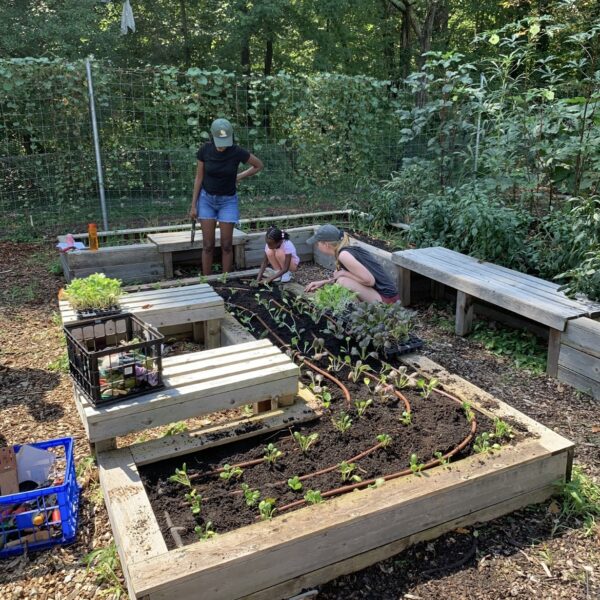
Transplanting pak choi and tatsoi seedlings in u-shaped raised bed.
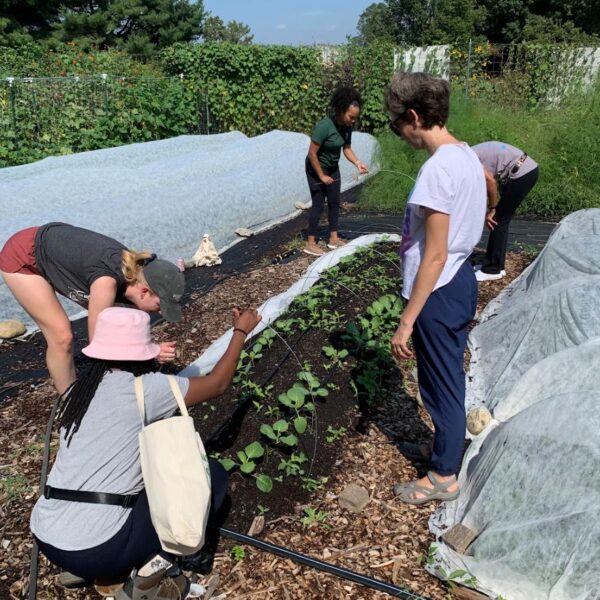
Using row cover to protect collards that were transplanted for fall.
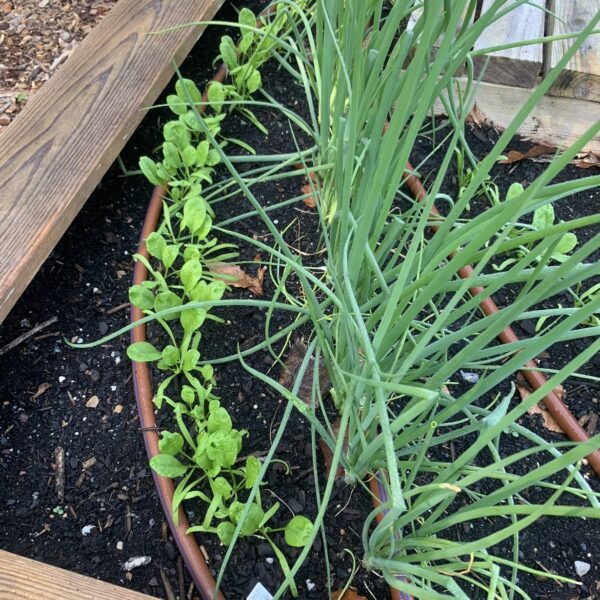
Spinach growing from seed and scallion transplants together in same raised bed.


